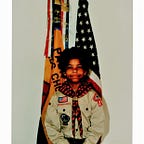Open Casket — Per Se
There is a feature length film released in 1984 called Moscow on the Hudson starring Robin Williams and Maria Conchita Alonso. When the movie made it’s way to our VHS collection I remember thinking “…this is Robin Williams, but this is not a total comedy. This is a love story of immigrants that began as a tragedy. What is there to identify with and why do I still laugh?” As drama goes there were some uncomfortable scenes. This was well-balanced with satire and a genius revealed in ways that continue to be embraced. I was still a kid when our family lived in post WWII Germany, or Cold War Europe as some will also say. Americans could be spotted pretty quickly by the clothing for the most part or maybe the car driven. Most folks appreciated an effort to learn and speak the local language. Somehow I had a firm understanding that life on the other side of the Iron Curtain was tough — people were defecting left and right from their respective countries to find a better life in America. The film seemed relevant at the time of writing this paper, especially with regard to the microscope that immigration policies are under or need to be.
Dana Shutz’s Open Casket wasn’t something I disliked, per se, but I still think an art gallery was maybe the wrong choice of venue (which unavoidably gives context and legitimacy), and a better effort understanding made of the artist’s intention should have been a focus. In the Christian faiths the cross is held in high esteem. Every practicing Catholic in my family has one or one-hundred crosses or reproductions, versions (light and dark toned) paintings of Jesus’ final moments of crucifixion. In its time crucifixion was state-sanctioned and somewhat ritualized murder imposed on those attempting to go against the grain of acceptable cultural norms. Would also be interesting to know how any surviving relatives of that time would feel about the use of the crucifix in what is now a religion with global reach. The idea held in the stories is that Jesus died for “Our Sins” and the cross is a reminder of this. Okay so, any parallels for Emmet Till? How many sins led to the eventual and brutal death of an innocent child? Maybe reproductions should be made as a way to remind us all about Emmet’s story — so that the price he paid for the sins of others is also not forgotten.
As an American kid, born outside of the U.S. I identified with the prospect of one day seeing the abundances, prospects of making it big, then finding love. I turned twelve-years-old the same year our family moved permanently to the U.S. William’s film never mentioned anything about West Texas or living in the south as a transplant from another country. And like Emmet, I had no understanding of social norms in my new home away from home. My lived experiences [aka wisdom(s) when you get to this age] have brought better context and new thinking to both Moscow on the Hudson and Open Casket.
